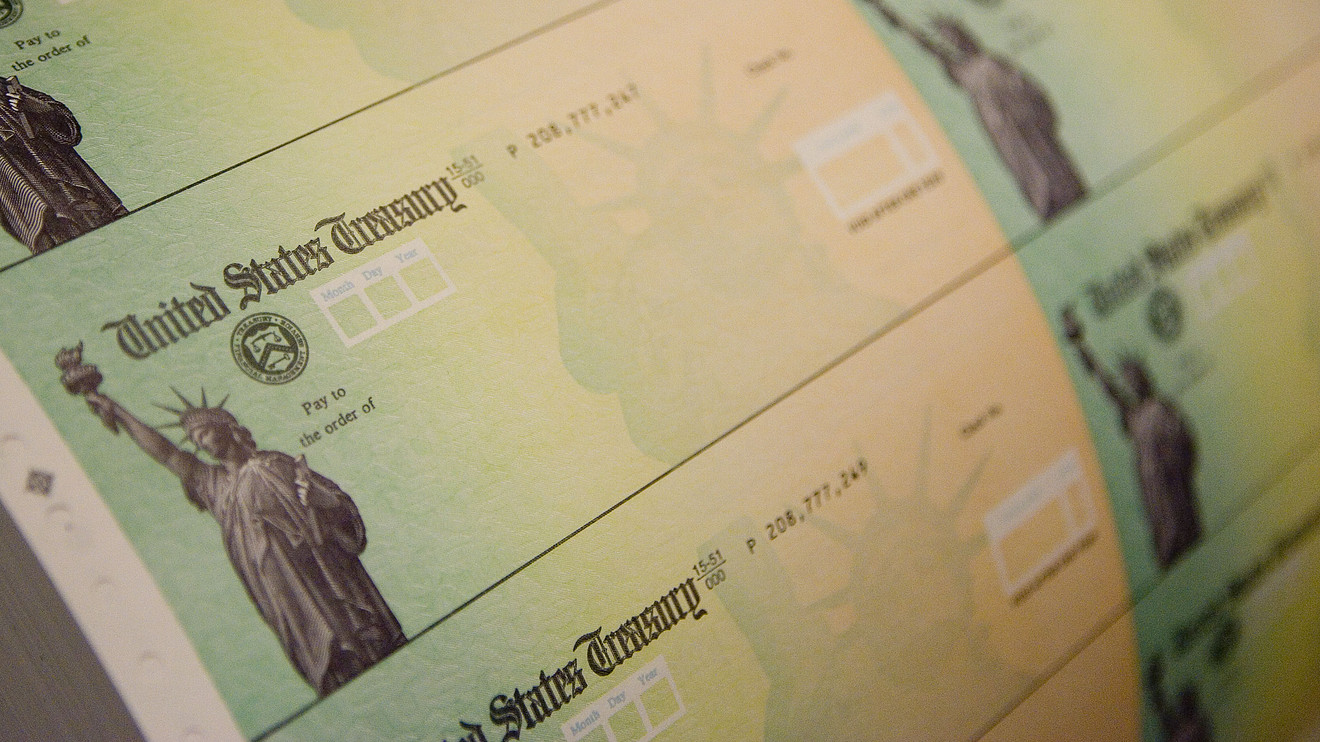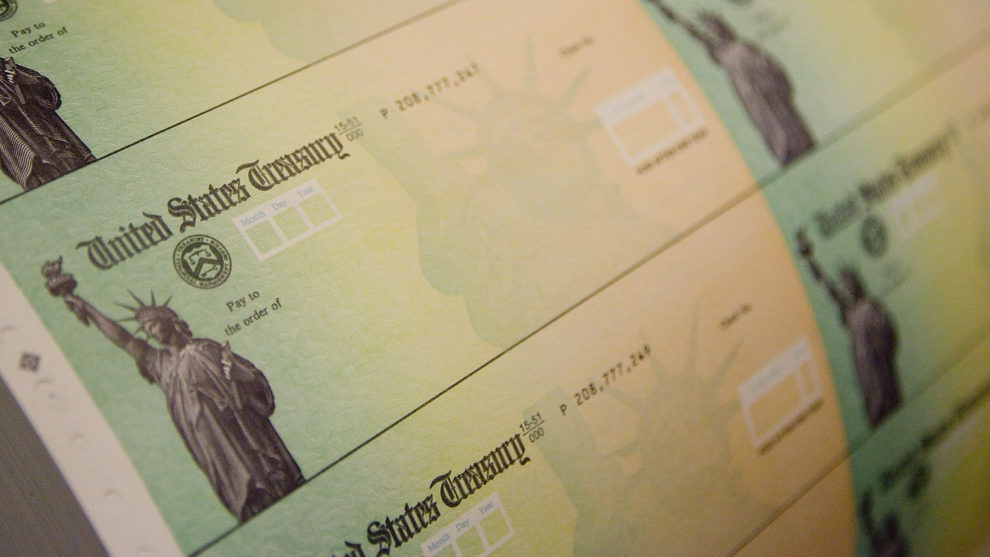
Bills pending in Congress would provide free rent and mortgage payments during the coronavirus emergency, and a monthly check of $2,000 for those over age 16 and $5,500 for a family with three children.
My heart goes out to those who have been adversely affected by the coronavirus. This is, for some, a devastating time.
It could be that the subsidies from the government may ward off economic destruction.
And for stock market investors, the key question is: “How will all of the existing and potential new government largesse affect the stock market?”
Let’s explore with the help of two charts.
Charts
Please click here for an annotated chart of the SPDR Dow Jones Industrial Average ETF DIA, +1.61%, which tracks the Dow Jones Industrial Average DJIA, +1.62%.
Please click here for an annotated chart of the Federal Reserve’s assets.
Note the following:
• The first chart, which is monthly, gives a long-term perspective. It should be the starting point of all analysis.
• The first chart shows that on Jan. 22, The Arora Report called the potential stock market drop ahead due to coronavirus.
• The first chart shows that the stock market has touched the low band of the resistance zone.
• Investors have been writing, saying they are struck by the simple fact that the stock market touched the top band of the “mother of support zones” shown on the first chart and reversed to the upside. The mother of support zones was given in advance before the stock market drop.
• The second chart shows the massive rise in the Federal Reserve’s assets.
• Both charts together show that when the Federal Reserve started adding more liquidity for repos (repurchase agreements), the stock market took off in October 2019 for a straight-up run to Feb. 19, 2020.
• The second chart shows the massive rise in Federal Reserve assets due to money printing to finance government largesse to cope with coronavirus. The first chart shows the stock market rally.
Ask Arora: Nigam Arora answers your questions about investing in stocks, ETFs, bonds, gold and silver, oil and currencies. Have a question? Send it to Nigam Arora.
A bullish scenario
If the prevailing trend continues, the stock market will likely go up in the short term on new government programs. That could start the second leg of a short-squeeze that could lead to new highs.
That would be a gift for President Trump going into the November election. Wall Street loves Trump, and if Trump wins in a landslide, imagine how high the stock market could go. I will write more on this prevailing insanity in a future column.
The long(er) view
Before sending me hate mail for proposing a bullish scenario, remember the following:
• In 2016, when Wall Street had anointed Hilary Clinton as the next president, The Arora Report called Trump’s election. After Trump’s election, when, almost universally, analysts were calling for a big drop in the stock market, The Arora Report gave an aggressive buy signal, which turned out to be spot-on.
• When the stock market — the Dow — was trading in the range of 16,000 points, The Arora Report gave a target of 30,000 for Trump’s first term. Subsequently, the call was repeated several times.
• When the stock market rose and the Dow Jones Industrial Average approached 30,000, The Arora Report never raised its target over 30,000 at a time when others were giving higher targets.
• This stock market is controlled by the momo (momentum) crowd. The momo crowd does not do deep analysis.
• When the Fed prints more money, some of it ends up in the stock market.
• The government claims that there is no inflation and, therefore, it is fine to print more money. Well, there is inflation in the stock market. Stock prices have quadrupled since the Great Recession.
Risks remain
Significant risks remain in the stock market both to the upside and the downside. Risks are much bigger to the downside than to the upside. Extreme positive sentiment in five popular stocks, Amazon AMZN, +1.62%, Microsoft MSFT, +2.28%, Apple AAPL, +1.71%, AMD AMD, +3.81% and Tesla TSLA, +2.00%, is giving a contrarian “sell” signal.
At this time, all Arora Portfolios are well-protected and the plan is to continue with a logical framework of protection bands, strategic buying when stocks and ETFs fall into buy zones and tactical decisions to nibble when the signals are given. Those who are not at comfortable points in the protection bands may consider selling in to this rally. Unless a new leg of a short-squeeze starts, a medical breakthrough occurs or more government programs take hold, this stock market is primed to fall.
Answers to your questions
Answers to some of your questions are in my previous writings. You can access them here.
Disclosure: Subscribers to The Arora Report may have positions in the securities mentioned in this article or may take positions at any time. Nigam Arora is an investor, engineer and nuclear physicist by background who has founded two Inc. 500 fastest-growing companies. He is the founder of The Arora Report, which publishes four newsletters. Nigam can be reached at [email protected].






